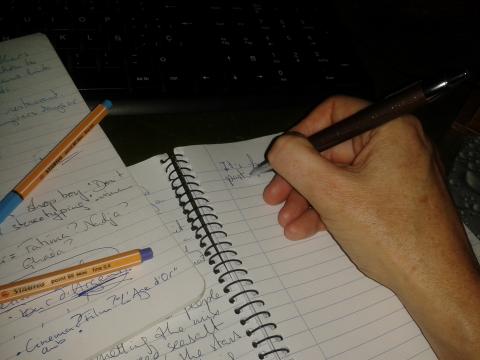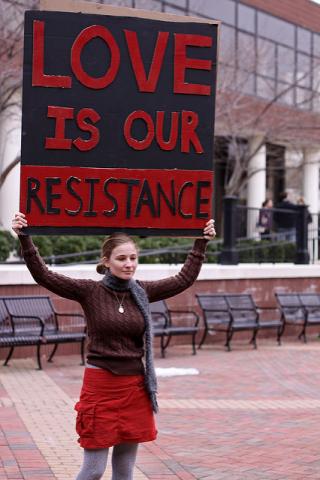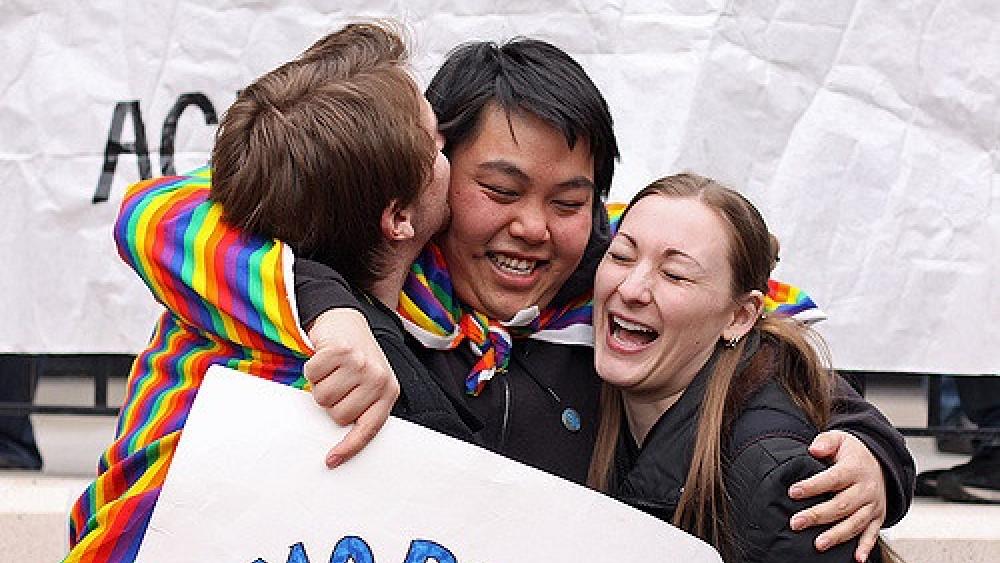Respect for Every Child
Every child has a right to be safe and supported at school and in their community. Race, faith, gender, socio-economic status, and who we love must never be a factor in how well we treat any child or person. As educators and caring adults, we model and set the tone of acceptance of all individuals and groups in our schools. LGBTQ youth are at higher risk than their peers to be victims of violence, suicide, and incarceration. With recent news about restricting rights for transgender individuals, many of us are asking how to establish a climate of respect in order to support all children. One approach includes informed discussions about respect and justice for the diverse community of learners, which in turn, could develop into a service-learning project of advocacy for civil rights.
This article will use the framework of service-learning - investigate, plan, take action, reflect, and demonstrate - to advocate for a gender inclusive climate.
Photo Credit: Mar 02 (167) by Jessica Lucia is licensed under CC by 2.0Investigate the Facts
 Learning from a reputable, factual source is the best starting point for understanding what it means to be transgender and how to treat people who are transgender with respect. This inclusive curriculum from GLSN is an excellent resource to understand the issues, as well as get access to excellent guidelines and teaching tools. We recommend you educate yourself first with facts and the nuances of the language surrounding transgender and gender identity.
Learning from a reputable, factual source is the best starting point for understanding what it means to be transgender and how to treat people who are transgender with respect. This inclusive curriculum from GLSN is an excellent resource to understand the issues, as well as get access to excellent guidelines and teaching tools. We recommend you educate yourself first with facts and the nuances of the language surrounding transgender and gender identity.
If you know a young person who is transgender (or gender fluid), be sure to ask them what pronoun they prefer. It is especially respectful if everyone displays their favored pronouns in order to normalize gender identity as an expected part of getting to know anyone. Ideally, the administration, teachers, and parents make a plan with and for the child that includes preferred pronouns, where to use the bathroom, and how they want to transition publicly. This Human Rights Campaign guide for Schools in Transition helps schools with this process. Note: parents are not always accepting, and the school may be the only safe place for the child to express their identity openly. Never "out" a child without their permission.
Photo credit: Writing 1 by eltpics is licensed under CC by 2.0
Language:
- gender identity: what gender one identifies with
- gender presentation: how they present their gender
- transition: changing cues to be in line with identity or expression (Note: transgendered is not a respectful term)
- preferred pronouns: what pronouns to use for them (he/him; she/her; ze/hir; they/them)
- gender fluid: a changing identity of gender
- gender non-binary: not fully identifying with either gender
- gender non-conforming: not conforming to male or female
- transgender: male to female; female to male -- identifying as the opposite of the gender assigned at birth
- gender assignment: the gender given to one at birth
- sexual orientation: who you love or are attracted to
- stealth: when a transitioned person presents as their identity and keeps their assigned gender secret (at school or work)
This glossary from the Annie E. Casey Foundation provides inclusive, respectful terms and their definitions.
Identify Needs
 What issues arise for the school community and for the students who are transgender or gay? There may be bullying and trauma, lack of understanding or awareness, lack of acceptance, or unsafe bathroom situations. The curriculum may have outdated language that LGBTQ youth find insulting. The media has created a lot of confusion about something that has been around forever but has been clouded by secrecy and shame.
What issues arise for the school community and for the students who are transgender or gay? There may be bullying and trauma, lack of understanding or awareness, lack of acceptance, or unsafe bathroom situations. The curriculum may have outdated language that LGBTQ youth find insulting. The media has created a lot of confusion about something that has been around forever but has been clouded by secrecy and shame.
The children and youth in your circles and classrooms who are questioning their gender identity, not presenting their gender openly, or have already transitioned are all vulnerable and observant to the language and behavior of their teachers and classmates. They often hear subtle language of unacceptance, misunderstanding, as well as expressions of outright cruelty. They, and all the children around them, will benefit from an inclusive and accepting environment. Through discussions, identify the issues faced and start to explore what action can be taken by adults, students, and the community to ensure justice and safety in your school. It may be appropriate to start a club or make guidelines for events or safe spaces to demand justice for all students.
A transgender teen girl said in her blog, "It's a revolutionary thing to exist in a world where we're told not to." Imagine all the uncertainty, not about who they are but, about how society will accept and treat these vulnerable children. They often do not feel accepted or safe. Startlingly, the suicide rate in the transgender community is around 40 percent.
Take Action
 What can be done? It's time to embrace this real community need and, even if we don't have an openly transgender student in our group, take action to change attitudes and fear into love and respect for diversity. With modeling and school or community policy, we can make sure all children feel safe expressing their true selves. With advocacy and awareness, we can move away from the idea that gender is only male or female, and soon we as a people will see the whole spectrum of gender expression as beautiful. Youth may be the best advocates for themselves and their peers by speaking up when they see injustice or sharing information to promote inclusion and respect.
What can be done? It's time to embrace this real community need and, even if we don't have an openly transgender student in our group, take action to change attitudes and fear into love and respect for diversity. With modeling and school or community policy, we can make sure all children feel safe expressing their true selves. With advocacy and awareness, we can move away from the idea that gender is only male or female, and soon we as a people will see the whole spectrum of gender expression as beautiful. Youth may be the best advocates for themselves and their peers by speaking up when they see injustice or sharing information to promote inclusion and respect.
Ideas:
- High school students can produce social media and videos that teach about how our language subtly reinforces gender stereotypes and negatively affects people of all genders.
- Schools can facilitate clubs that advocate a celebration of the wide spectrum of gender expression, including children not in the LGBTQ community.
- Students can host an alt prom.
Reflect
Keep an open dialogue and listen to the young people in your group. They will all have questions and ideas. Encourage reflection through discussion, writing, games, and art.
Demonstration
Provide an opportunity for young people to share what they have learned, and the progress made to address the needs identified. This may be in the form of an art exhibit, an article, or a presentation for the school board. They may document policy changes at school. One measurement of success is that more LGBTQ students who have been silent will feel safe coming out or transitioning publicly.
Remember, never "out" a child without their permission. Follow their lead and trust that they are following an inner voice that it takes courage to acknowledge.
More Resources
Learning to Give lesson plans and resources:
Justice and Kindness Play a Part (grades 6-8) Students explore ways to make a difference for justice and kindness.
Justice-Related Service-Learning Toolkit: Lesson plans and project ideas related to justice and civil rights.
